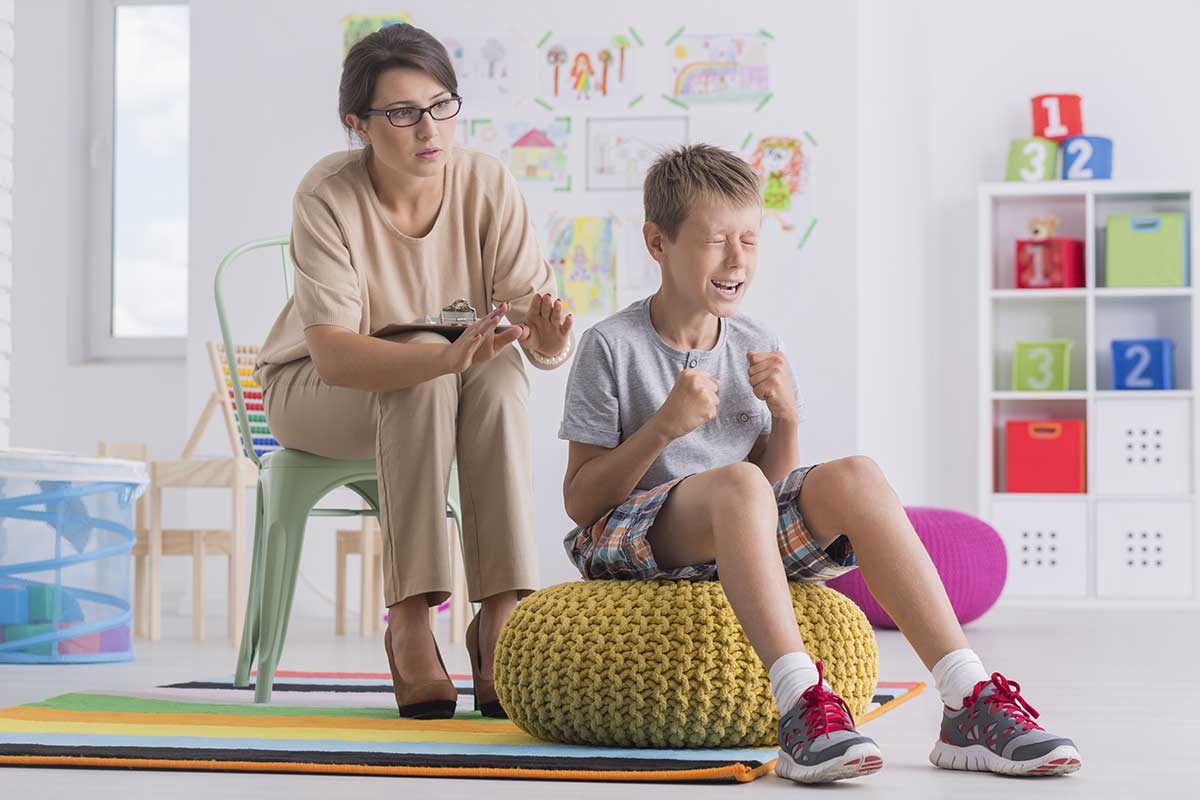Repetitive motions like arm flapping, nodding, and stomping may be early signs of autism spectrum disorder. These movements have the potential to escalate into more violent behavior, causing self-injury. Violence and self-injury can be the most difficult symptoms of autism spectrum disorder witness and experience. While rather common, these behaviors are considered nonsuicidal, often involving repetitive biting, hair pulling, or hitting one’s head against a hard surface. These behaviors often begin early and childhood and can alert parents to begin autism spectrum disorder screenings with their child’s pediatrician.
Online programs from the aba|tools autism software provide diverse analysis and ABA resources. This helps children, parents, and therapists develop strategies for safe learning and skill development. Learn more by contacting us online.
Self-Injury in Children with Autism Spectrum Disorder
Violence and self-injury vary from child to child. If your child is exhibiting self-injurious behavior, a few important concepts to hold onto include:
- Stay calm and don’t get lost in your own emotion
- Do everything you can do to keep people safe
- Take good care of your own health needs
- Hiding away will not solve the problem
- Don’t give up on ABA therapy
While children without autism spectrum disorder are sometimes drawn to self-harm with burning and cutting, children on the autism spectrum are more likely to engage in the following types of self-injurious behavior:
Head Banging or Hitting
Children on the autism spectrum may bang their heads or other body parts against the floor or wall as a violent or nervous tick.
Hair Pulling
Children may pull out hair or eyebrows leading to visible patches of missing hair.
Pica
Pica is a condition in which one eats things that are not food, such as dirt or sand.
Skin Picking
Children may focus on the same areas of skin and repeatedly remove scabs.
Unlike suicidal behavior, self-harm symptoms presenting in autism spectrum disorder are not intended to cause serious injury and/or death. Instead, they provide the child with a particular feeling or sensation that causes a release. For many, self-harm is a coping mechanism to regulate emotions or a method of self-expression in social situations. It’s also may be a sign of poor impulse control. Through various forms of ABA therapy, children with autism spectrum disorder can find other ways to cope with their emotions and engage in the outside world.
Managing Self-Injury At Home
The first step in managing self-injury and violent behavior symptoms is paying attention to physical signs of harm. This may include bruises, bite marks, hair loss, and wounds that are not healing in a normal amount of time. Parents often witness self-injury behavior first-hand, which can be an alarming and overwhelming experience. Seeing a child’s behavior can help parents, doctors, and therapists identify what triggers are leading to self-harm. Triggers for self-harm may include any of the following:
- Boredom – A lack of stimulation can lead children with an autism spectrum disorder to seek stimulation through violence.
- Difficulty communicating – For many children with autism spectrum disorder, communication is challenging and can lead to anxiety and frustration released through self-injury.
- Escaping discomfort – This could range from discomfort in communication to discomfort in social situations.
Tools like applied behavior analysis, language skills development, and life skills practice can help those experiencing self-injury symptoms express themselves in other ways. Improving communication and helping children understand and accept their emotions and behavior can help lead to a more independent life and reduce violent behavior. Outside of therapy, parents can encourage independence to boost self-esteem, reinforce positive behavior, and shift triggering situations before they begin with different routines and environments.
Violent symptoms can be detrimental to children with autism spectrum disorder over time, but preemptive therapy, support, and attention to a child’s emotional needs can often stop the behavior entirely.
Register for aba|tools for More Information
Help track your child’s behavior with aba|tools’ digital ABA flashcards. Developed by a BCBA, our convenient autism software can be accessed by parents, therapists, and educators using an iPad or tablet to track a child’s learning and behavior patterns. Our library of digital language development adapts to every child’s learning needs. Download aba|tools to help your child develop language and communication skills for greater independence. To begin using aba|tools in your ABA therapy sessions, register today.






